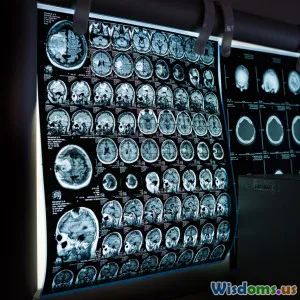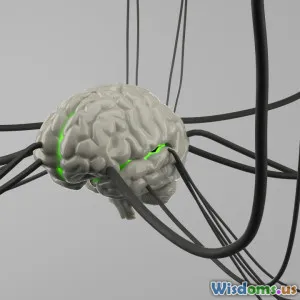
Neuroscience Trends Redefining Language Learning Techniques
9 min read Explore how cutting-edge neuroscience is transforming language learning with innovative techniques and insights for effective mastery. (0 Reviews)
Neuroscience Trends Redefining Language Learning Techniques
Language learning is no longer just about memorizing vocabulary lists or endlessly repeating grammar drills. Thanks to rapid advances in neuroscience, our understanding of how the brain learns and processes new languages is evolving—ushering in a new era of innovative, brain-friendly language-learning techniques. This article explores the latest neuroscience trends redefining language education, revealing cutting-edge approaches supported by scientific research.
Introduction: Why Neuroscience Matters in Language Learning
Language is arguably the most complex cognitive skill humans develop. Traditionally, language learning relied on behaviorist models emphasizing repetition and habit formation. However, new findings from neuroscience have exposed the intricate neural mechanisms underpinning language acquisition and fluency. Insights about neuroplasticity, memory consolidation, and brain connectivity allow educators and learners to tailor methods that align with the brain’s natural functioning.
As Dr. Stanislas Dehaene, renowned cognitive neuroscientist, puts it: “Understanding neural processes offers a roadmap for designing language learning that respects how the brain encodes and retrieves language.” This intersection between neuroscience and language learning is resulting in techniques that are faster, more effective, and deeply personalized.
In the following sections, we unpack the major neuroscience trends revolutionizing how languages are taught and learned today.
The Body
1. Harnessing Neuroplasticity to Enhance Language Acquisition
Neuroplasticity refers to the brain’s extraordinary ability to reorganize itself by forming new neural connections throughout life. This adaptability is central to learning new languages.
Scientific Foundations
Studies using fMRI scans demonstrate increased gray matter density in the hippocampus and language centers like Broca’s and Wernicke’s areas in multilingual individuals compared to monolingual peers. A landmark 2011 study by Mechelli et al. showed these brain changes correlate with proficiency and age of acquisition.
Practical Application
Language programs now emphasize immersive experiences rather than rote memorization. For example, Duolingo's gamified learning integrates spaced repetition that optimally stimulates neuroplasticity by refreshing neural circuits just before they weaken—a concept backed by neuroscientific studies on memory.
Additionally, brain-training apps deployed cognitive exercises designed to stimulate language-related brain regions synergistically, accelerating fluency acquisition.
2. The Critical Role of Sleep in Language Learning Consolidation
It’s often joked that learning with your eyes closed doesn’t count, but emerging evidence suggests that sleep is where the heavy lifting happens for language learners.
Sleep neuroscience reveals that during deep, slow-wave and REM sleep, the brain consolidates newly learned material, especially procedural and declarative memories essential for vocabulary, grammar, and pronunciation.
Evidence and Examples
A 2017 study published in Nature Communications showed participants who napped after learning new vocabulary recalled words 10-15% better than those who stayed awake. Furthermore, the phenomenon of “sleep spindles”—bursts of brain activity during sleep—correlates strongly with language retention.
Consequently, modern language courses advise structured learning sessions followed by adequate sleep rather than massed cramming. Even workplace language learning platforms integrate reminders on the optimal timing of practice and rest.
3. Emotional Engagement and the Limbic System’s Influence
Neuroscience shows learning is not purely cognitive; emotional states drastically affect the brain’s ability to process and retain language.
The limbic system, involved in motivation and emotion, modulates memory encoding and retrieval. Stress, anxiety, or boredom can inhibit language acquisition by suppressing neural pathways, while positive emotions boost neurochemical agents like dopamine critical for learning.
Implementation in Language Instruction
Immersive VR language environments create low-stress, engaging contexts triggering positive emotional response. For instance, apps like Mondly VR simulate real-life social situations, immersing learners socially and culturally, thus activating the limbic system and strengthening memory retention.
Teachers incorporate storytelling, humor, and socially relevant content because neuroscientific research confirms emotional salience promotes long-lasting memory formation.
4. Brain-Computer Interfaces and AI-powered Language Learning
A groundbreaking frontier merges neuroscience with technology: Brain-Computer Interfaces (BCIs) and AI algorithms shape the future of personalized language learning.
Brain-Computer Insights
Experimental BCIs detect neural patterns associated with language comprehension in real-time, allowing adaptive adjustments to difficulty or type of language input. For example, researchers at the University of Michigan have demonstrated EEG-based systems to measure learner cognitive load and optimize lesson delivery instantly.
AI chatbots enhanced with neural linguistic programming models mimic human-like responses, providing interactive practice tailored to the learner’s proficiency and progress.
Real-World Products & Outcomes
Applications like Elsa Speak analyze speech neurophysiology to detect subtleties in pronunciation, guiding users toward native-like intonation. Meanwhile, AI-driven platforms such as Lingvist calibrate learning pathways dynamically, ensuring optimal cognitive engagement.
5. Multisensory Learning and Distributed Neural Networks
Neuroscientists emphasize that learning grounded across multiple senses leverages distributed neural networks, enhancing language comprehension and retention.
Incorporating auditory, visual, tactile, and kinesthetic elements concurrently activates broader brain regions creating robust encoding patterns.
Examples
Classroom approaches that combine speaking, listening, reading, and gesture-based interactions tap into mirror neurons, facilitating more natural language internalization.
Language apps increasingly integrate multimedia—videos, interactive exercises, and real-time feedback—exploiting multisensory inputs. For instance, FluentU uses authentic video content with subtitles and captions engaging several sensory modalities simultaneously.
6. Personalized Learning through Neuroimaging and Cognitive Profiling
Neuroimaging techniques like fMRI and EEG are uncovering individual differences in language processing speed, working memory capacity, and syntax parsing.
These insights inspire personalized language curricula that align with a learner’s cognitive profile instead of a one-size-fits-all approach.
Emerging Methods
Tools that assess baseline neural metrics adapt lesson pacing and methodologies—some learners respond better to visual stimuli, others to auditory cues. Customized strategies minimize frustration and enhance motivation and eventual proficiency.
Schools employing neurocognitive assessments alongside language aptitude tests have documented faster progression rates and improved learner satisfaction.
Conclusion: The Future of Language Learning is Neuroscience-Driven
The convergence of neuroscience and language education is powering a shift toward more efficient, engaging, and personalized learning methods. By leveraging neuroplasticity, optimizing sleep, engaging emotion, utilizing advanced brain-computer interfaces, and applying multisensory and individualized approaches, language learning is becoming more aligned with the brain’s natural mechanisms.
Learners today benefit from scientifically-informed techniques that go beyond traditional methods, promising faster fluency and deeper mastery. As neuroscience continues to deepen our understanding of the brain–language relationship, educators and technologists are poised to revolutionize language instruction worldwide.
Take Action
- Prioritize sufficient sleep after study sessions to cement language gains.
- Engage emotionally with material through stories, humor, and cultural immersion.
- Use adaptive language apps that apply spaced repetition and speech analysis.
- Experiment with multisensory modes—watch videos, speak aloud, and use gestures.
- Assess personal cognitive strengths and seek personalized learning plans if possible.
By embracing these neuroscience-driven strategies, anyone can unlock the full potential of their brain in acquiring new languages.
Rate the Post
User Reviews
Popular Posts


















